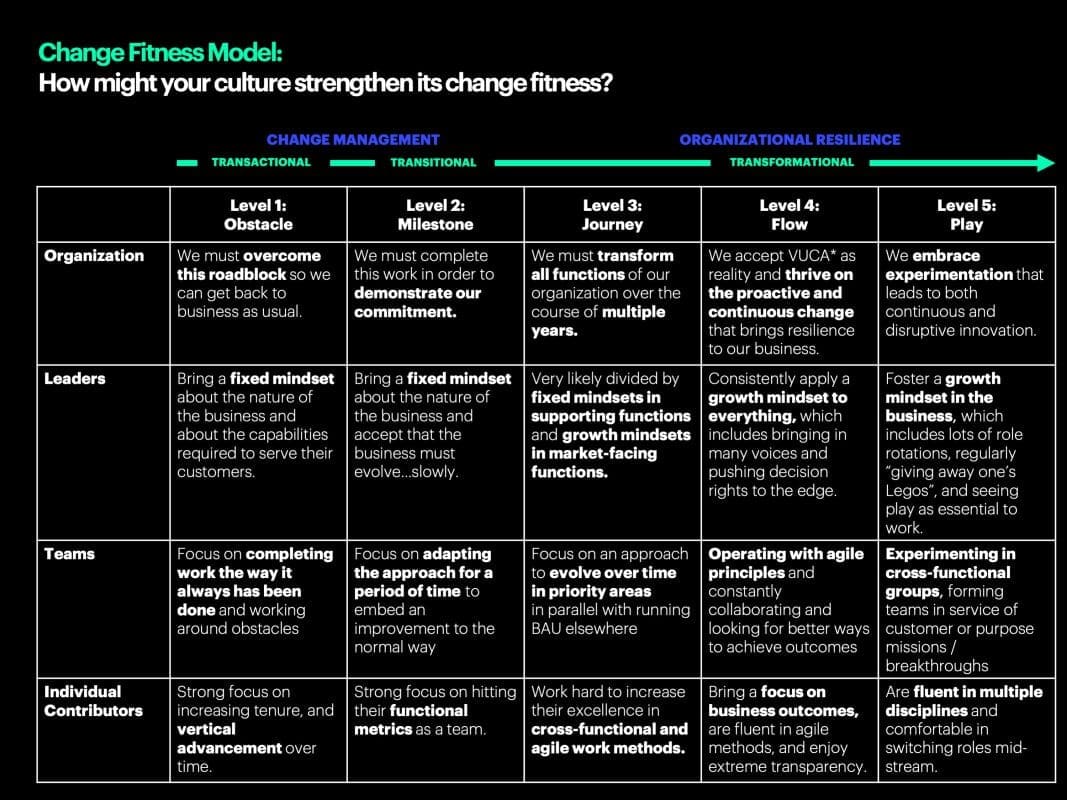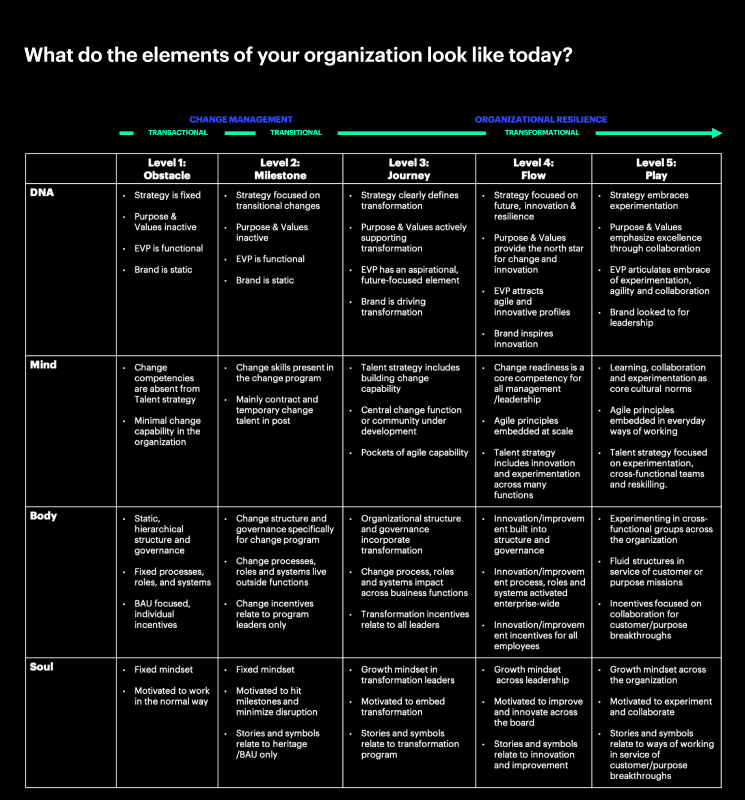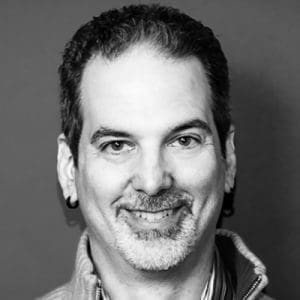BLOG
A Model for Transformational Change Management in a Post-Pandemic World
Transformation calls for a level of organizational fitness that’s radically different. How ready are you?
The past year has shown the critical capacity organizations need to build for change. The COVID-19 crisis saw many organizations forced to adapt business models, embrace new ways of working and instill a more digital culture mindset. As we see the light at the end of the tunnel, the focus for organizations should be on developing a resilient approach to transformational change management that outlasts the pandemic and supports ongoing transformation. This means that companies need an enhanced approach to change management to ensure they have the agility to reinvent themselves more frequently in this disruptive age.
The Shortcomings of Outdated Change Management Models
It’s been 25 years since the advent of change management and organizations are facing the reality that change is more than a single event to be overcome. It’s now apparent that the incessant onslaught and acceleration of technological advancement requires a new perspective if organizations are to thrive in this environment. Even today, change models (e.g., Kotter, ADKAR) mostly posit some return to stasis and require their deployment in never-ending waves of programmatic change. There must be a better way.
A Modern Model for Transformational Change Management and Organizational Fitness
What is to be done? How might we build the organizational resilience required to not just “manage change” but rather to collectively engage with a positive mindset? And it’s not just technological shifts we need to prepare for, as we know that the forces of remote work, climate change, environmental sustainability, stakeholder capitalism and social justice movements will be impacting us for years. But there will inevitably be others. How might we navigate the many unpredictable forces the modern enterprise will need to face?
At Prophet, we’ve chosen to view the enterprise as a macrocosm of the individual. We believe it is important to take a human-centered approach to transformation because no matter how digital an organization becomes it is important to recognize that it is still ultimately a human endeavor.
“How might we build the organizational resilience required to not just “manage change” but rather to collectively engage with a positive mindset?”
As we have reflected on the inadequacies of outdated models and methods for change management, we have begun to recognize that there is a new discipline emerging in our field of work: transformational change management. Transformational change management begins where change management leaves off. It recognizes as fundamental the fact that there is no single milestone to be achieved: there are many. The process of transformative change, therefore, is viewed as an ongoing journey, often with a higher altitude, strategic destination. As a result, the ability to absorb change has become a core cultural attribute for organizational growth.
Over the last five years, our transformation practices have begun to crystallize into specific behaviors, methods, tools, skills and models. And those, in turn, have yielded the insight that our human metaphor for the organization extends to address the issue of embracing continuous change as a way of life. Prophet’s Change Fitness Model is a way of describing five connected and ascending levels of capability for individuals, teams, leaders and organizations to thrive throughout ongoing transformation.

Level 1 is where we view the world with a fixed mindset and change is viewed as an obstacle to be overcome.
Level 2 is where things begin to be framed slightly more positively and change is a milestone to be achieved and celebrated. However, our worldview still tends to favor a return to a steady state afterward.
It is only at Level 3 that we begin to enter the world of transformational change and the traditional tools necessarily begin to fray. Change is now a journey, often one spanning several years, with many cross-functional, cross-organizational and enterprise milestones to be achieved and value to be measured. Level 3 is where our mindset, individually and collectively, must truly shift to one of growth and abundance. Change is exciting because it leads transformation into something better: a better business model, operating model, and often culture.
Level 3 is where Prophet often meets our most significant engagements. Client organizations recognize the need for changes to their DNA and as a result, all the organizational components of Body, Mind and Soul must evolve as well. Our desire with these clients is to leave them better than we found them – at Level 4. And therefore, we seek to design and manage the program such that the pace of change tilts, bringing as many of the colleagues into a state of flow as possible. This means moving just enough pieces at once so that everyone is working at the height of their competence, but not to push efforts so fast that people feel burned out.
Ultimately, we believe organizations that learn to thrive on change and embrace a growth mindset eventually find their way to Level 5 – a state of play where transformation is a sport. It’s an opportunity to find yet more ways to excel, individually and collectively.
Now that we are seeing the world through the lens of the Change Fitness Model, we are more able to quickly diagnose needs with our prospective clients. A handful of probing questions – easily inferable from the chart below – quickly reveal where the organization stands today and suggest the kinds of work that could be helpful to build change muscle and resilience for the transformations to come.

FINAL THOUGHTS
As you look at your organization today, consider the descriptions in each row. Which seems to most accurately describe you as a leader? Which best characterizes how your team stands currently? What about your organization as a whole?
As you look forward to the rest of 2021 and beyond, a few minutes of consideration will likely reveal some important opportunities where your organization should develop increased change fitness. What actions might serve you best?
If you want to learn more about how you might increase your organization’s change fitness and build long-term resilience, then contact our Organization & Culture practice today.
